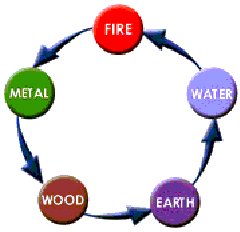
| Home |
| Intro |
| Current Issue |
| Mailing List |
| Store |
| Strength |
| Subscriber Content |
| ARCHIVES REVIEWS |
| Martialism |
| Pacifism |
| Q & A |
| Cunning-Hammery |
| Advertise With Us |
| Submit An Article |
| Staff |
| Discussion Forum |
| Links |
"Stay 'unreasonable.' If you
don't like the solutions [available to you], come up with your
own."
Dan Webre
The Martialist does not
constitute legal advice. It is for ENTERTAINMENT
PURPOSES ONLY.
Copyright © 2003-2004 Phil Elmore, all rights
reserved.
The Animals of Wing Chun
By Sifu Anthony Iglesias
It
is widely believed that the origins of Kung Fu are rooted deeply in animal forms
– movements studied and imitated by the first Kung Fu practitioners of the
Shaolin Temple as they observed certain living creatures.
You may hear from those who don't know better that Wing Chun is not an
"animal style." The fact
is, however, that animal characteristics are very much a part of Wing Chun Kung
Fu's different aspects.
The
five animals of Wing Chun are the tiger, leopard, white crane, dragon and snake.
Each of these five animals is associated with one of the Chinese elements: fire,
metal, wood, earth and water.
Each
Wing Chun lineage pays respect to the five animals in its own way.
Some kwoons have a snake and crane on their school banner, for example,
while others use the crane and tiger or just the dragon.
Regardless of lineage, the animal forms present in Kung Fu styles are
part of both our movements and our thoughts.
At the Syracuse Wing Chun Academy,
we focus on all five animals and their characteristics.
The Dragon uses the strength of Earth, which is both firm and loose, hard and soft simultaneously. Think of the firmness of a mountain versus the looseness of freshly dug soil. The Dragon is strong and decisive.
The
Snake is identified with the element
of Water.
It changes with the environment – hard like ice in the cold, soft in
its liquid form when warm. Like the
Dragon, the Snake possesses the duality of "hard" and
"soft," but unlike the Dragon, it flows more in harmony with its
environment.
The
Tiger has the strength of Fire.
Fire is like a bomb; it
explodes on an opponent without hesitation.
Fire is also intimidating. It
puts fear in the opponent.
The
Leopard is identified with the
Chinese element of Metal.
It uses the momentum of its body to generate power. Picture the arc of an axe as it swings into your body.
The
Crane is associated with Wood.
Wood evokes the concept of balance, which is important both
mentally and physically. Without physical balance, there is no power in one's
techniques. Without mental
balance, we cannot function properly as integrated living beings.
Understanding the animals and their elements greatly benefits the Kung Fu practitioner. We begin by looking at the Cycle of Destruction. This five-element relationship teaches us which animal or element counters (or "destroys" the other).

How
do we put this into practice? Let's say you are attacked by an opponent who uses
a powerful, linear approach (fire). The
opponent is much larger and stronger
than you. If you try to "fight
fire with fire," you will surely lose.
If, on the other hand, you fight fire with water, you will
extinguish your opponent's flames and increase your chances of survival.
When
facing powerful tiger characteristics, then – aggressive, direct, overwhelming
force – you become a snake, flowing around and past the attack, darting in to
strike and then moving offline to quickly follow up, frustrating your attacker's
intentions by refusing to fight him on his terms. You are, in fact, using precisely those characteristics that
best cancel out his strengths, which turns them into weaknesses.
If,
on the other hand, you face a challenging opponent who possesses the inner and
outer balance of a crane, you increase your chances of success by fighting this
animal form with the one that best counters that balance – the leopard.
You use flexible power and momentum to best meet the
characteristics the enemy brings to the altercation.
The
ultimate goal of most martial artists is to learn to use all five animals at the
same time, flowing effortlessly from one to the other as needed in the course of
a fight. It is not good enough to
know how to use each animal separately, for the dynamic ebb and flow of combat
demands that we make the transition from form to form to meet changing
challenges.
Through
constant practice and properly constructed drills, one can develop instinctive
reflexes – reflexes that take over the moment one makes contact with an
opponent. This is one of the reasons the "touch reflexes" of Wing
Chun, developed through chi sau (sticky hands) practice, are so important.
The
purpose of this training is, ultimately, to lead the Kung Fu practitioner to
enlightenment. The enlightened
warrior understands how things work as well as how they work against
one another.
In
time, learning the nature and applications of the five animals and their
elements permeates all aspects of the practitioner's life. This affects work and
personal relationships as well as all other parts of day-to-day living.
Just
as we do not meet stronger force head-on with force of our own in fighting, we
eventually learn how to apply this principle to the parts of our lives that are
not physical fights. Just as it is
unwise to fight fire with fire when there is water at hand, we learn to avoid
feeding non-physical conflict when there are conflict resolution strategies
available to us.
They are valuable concepts that are at once lessons and strategies.